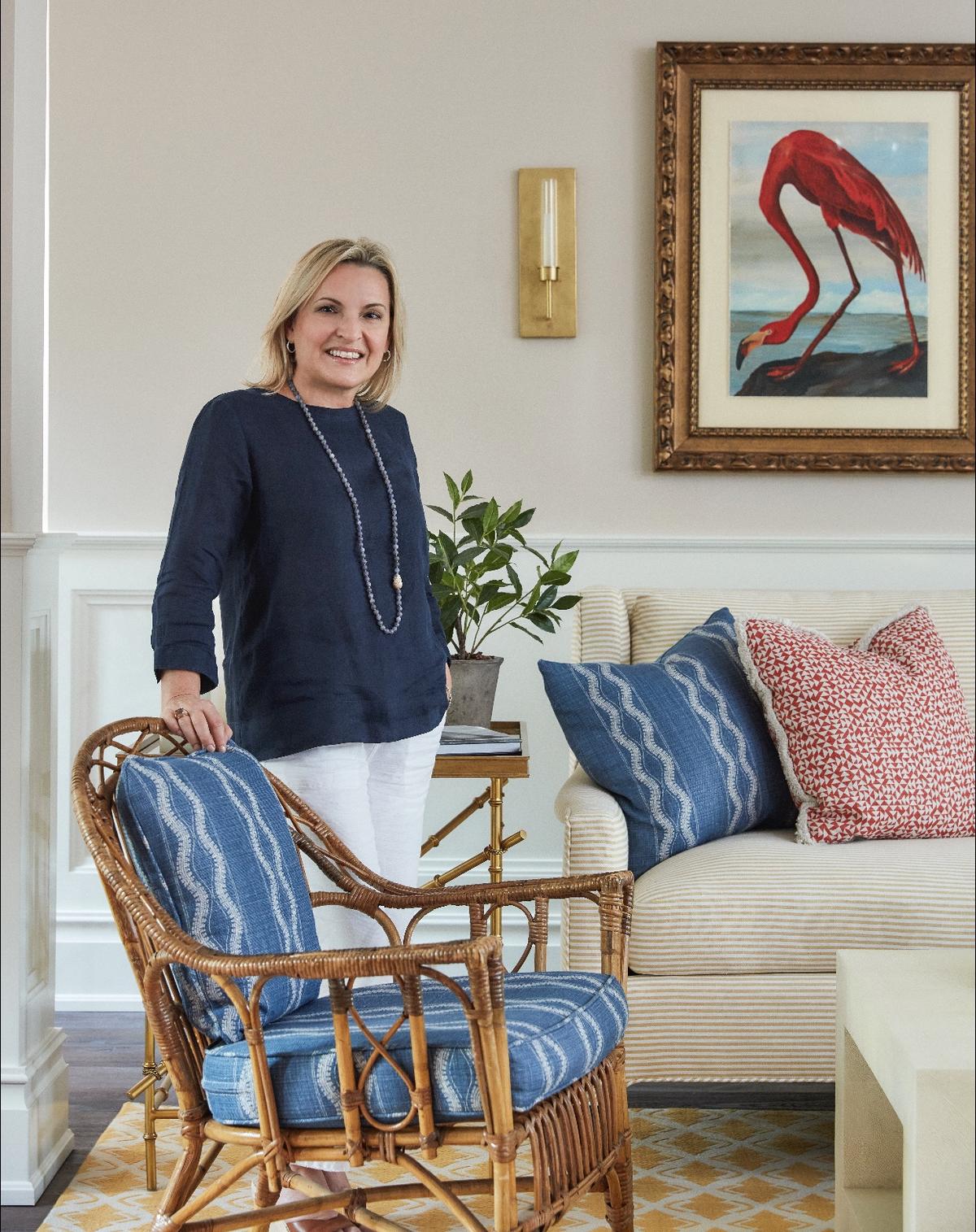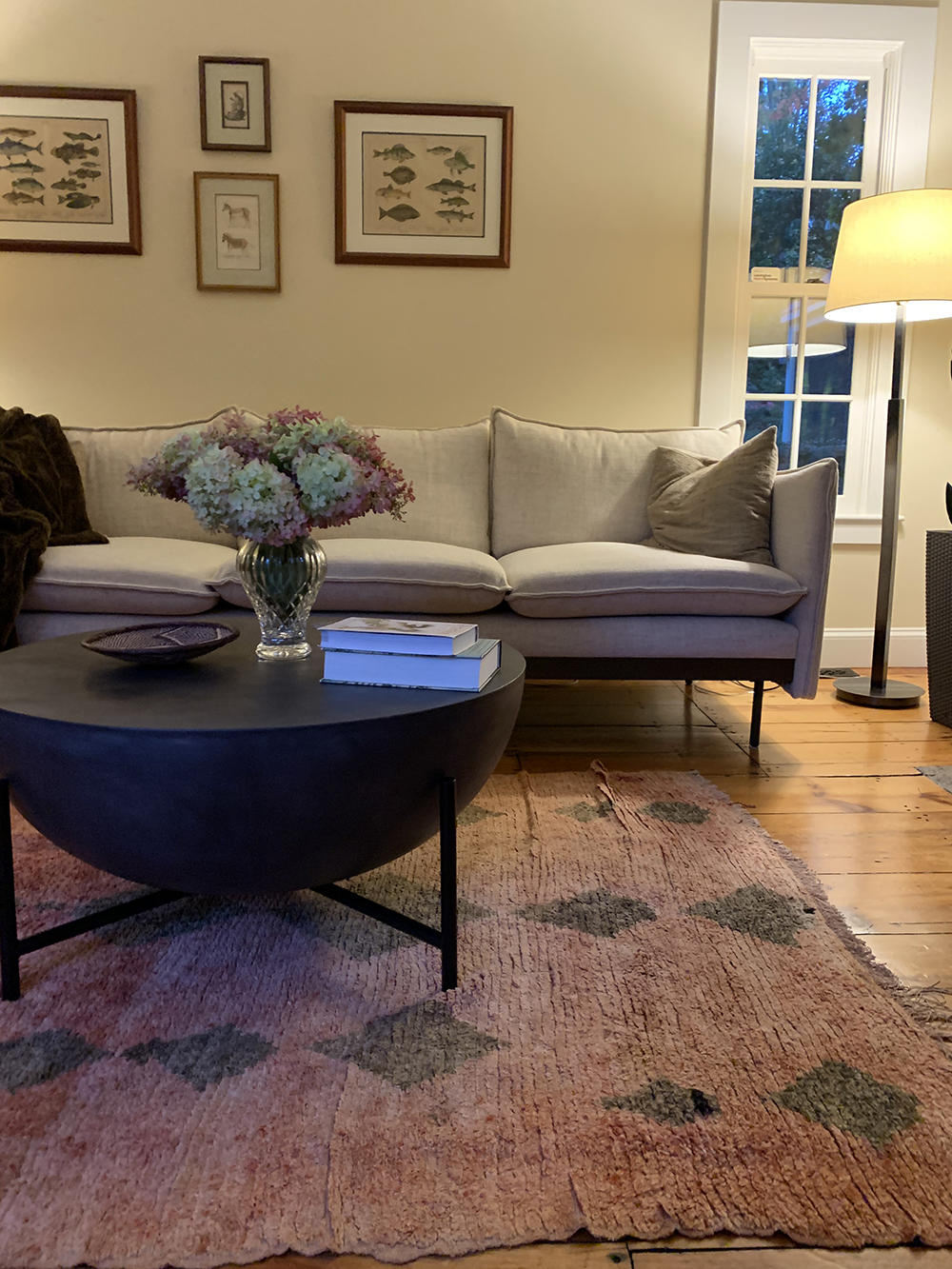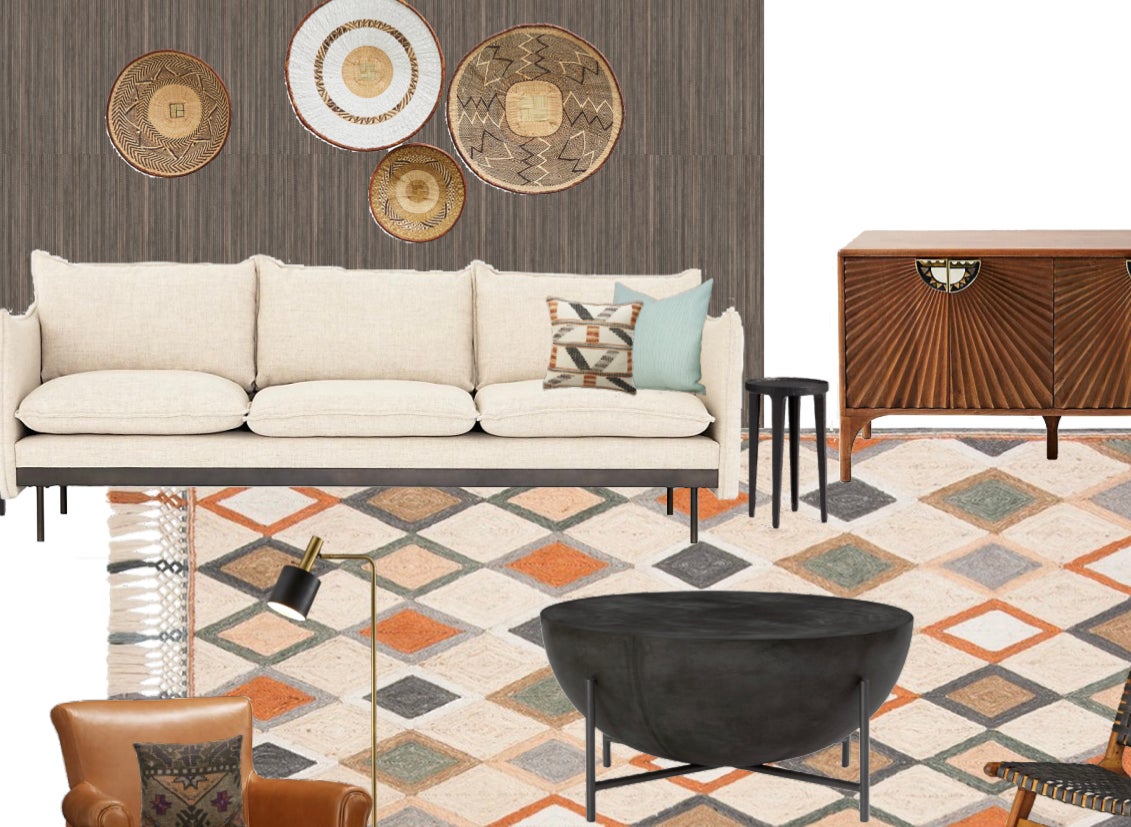It’s a familiar challenge for many designers: politely saying no to inquiries from lovely people who don’t quite have the budget for a real-deal project. Boston-based interior designer Kristen Rivoli encountered it again and again.
“I so often get inquiries from first-time homeowners who love design and my work, but they can’t afford to work with me,” says Rivoli. “They have some money saved, but it’s not enough to pay design fees and cover the cost of furniture. I found it frustrating that I didn’t have a way to work with them when their interest was so clearly there.”
In December, the designer turned what had long been a problem into an opportunity, launching a new business she’s calling Rooms by Rivoli. Using the service, clients can browse Rivoli’s room schematics and—for a $1,197 fee—receive links to all products, tips on installation and placement, and explanations of the room style and where to start. For clients who want to personalize the look, each package also offers alternate selections. “I see this as being for people who know what they want, they just need someone to pull it together for them,” she says.

Rivoli is not the first designer to look for a way to (profitably) work with lower-budget clients. Notably, the Denver-area designers Miranda Cullen and Devon Tobin of Duet Design Group spun up an entire secondary firm around the concept. And in recent years, many designers have tried to capture a lower tier of their market with some version of e-design—a trend that exploded in 2020 as the pandemic forced the industry to experiment working remotely with all their clients.
This, says Rivoli, isn’t that. The problem with e-design is that, at the end of the day, it still takes a lot of work for the designer, and time for the client. “I wanted to create a service for people who were ready to decorate their homes now, without the back-and-forth that most e-design comes with,” she says. Plus, by selecting one of her pre-packaged designs, clients know what they’re getting upfront, which can be a reassuring prospect. (She has found that not all clients are satisfied with the end result when working through a platform. “On a lot of those e-design platforms, you’re getting matched with a very young designer [whose] style may not align with yours—it’s just a hard way to connect creatively.”)
Rivoli is also not the first designer to explore the room-in-a-box concept. In 2019, Kathryn Ireland launched an entire platform around the idea, offering customers the ability to purchase pre-designed (and often already published) rooms by her and other marquee names, like Martyn Lawrence Bullard, Timothy Corrigan and Suzanne Kasler. Later that year, Florida designer Leta Austin Foster debuted PREtty FABulous Rooms (a play on prefab), a similar concept based around her own designs.
In theory, these ventures all share a common thread: offering access to high design at a lower price point. But small variations in execution can make for big differences. Foster’s and Ireland’s room-in-a-box offerings, for example, rely on trade-centric brands and seek to generate a profit on the margin. Consequently, they tend to come with pretty high price tags. (Foster’s rooms require customers to buy everything all-in and start at $35,000; Ireland’s platform allows customers to shop for individual pieces, but the total cost often reaches into the tens of thousands of dollars.)
Rivoli has taken a different tact: Clients purchase the products themselves, all of which come from retail sources. “Especially for new homeowners, the budget you have is what it is, which often means you need to furnish and decorate piecemeal,” she explains. “Maybe you can splurge on the new sofa now, but you need to wait a few months to buy the lighting or accessories. This gives them the flexibility to do everything on their own timeline.”

The price of the service is something that Rivoli struggled with, wanting to make it affordable enough for the demographic she’s hoping to reach, while still being profitable for her firm and reflecting her experience. “It took a while to come up with a holistic approach that would still service my high-end clients while also allowing me to offer this service to people who can’t afford me,” she says. Ultimately, Rivoli felt that clients were paying for her advice and acumen. “There is a value in my years of experience, the time I took to design these concepts and the advice I share in the schematic,” she says. “I’m hoping clients will understand that—and if they don’t, maybe this is a moment to educate them about the cost of what designers do.”
As she links to retail pieces, Rivoli does not receive a percentage of the sales, so her only profit from the service is from the upfront fee or from an add-on 30-minute video consultation, for which she charges $350.
The service launched with six options for living rooms in various styles and color schemes, but Rivoli plans to add more rooms over time, starting with home offices in the next few months. One feature they’ll all have in common? Her stamp of approval. “You can go to a big-box store and get a beige room put together for you, so I wanted to stay away from anything too simple,” she says. “I wanted these rooms to make a statement, for people to be able to connect with it and say, ‘Oh, I love that sofa!’ That’s why people go to a designer in the first place—they want your eye.”
Homepage photo: The Cape Town living room schematic from Rooms by Rivoli | Courtesy of Kristen Rivoli




























